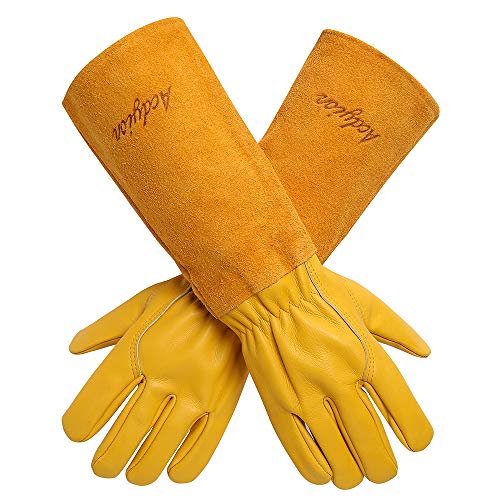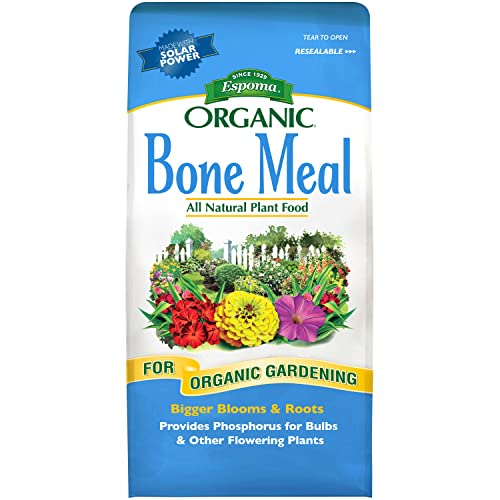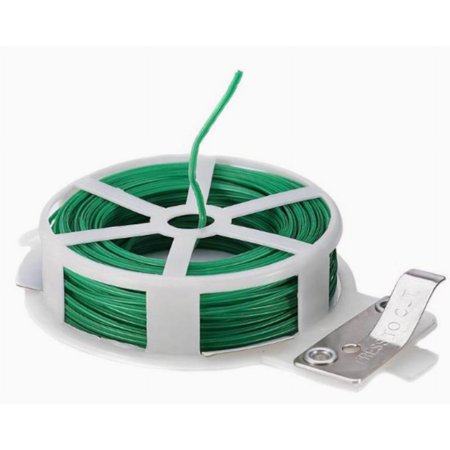How to fertilize star jasmine – experts reveal the secrets for healthy climbing plants with masses of scented blooms
Feeding your vines at the right time can give them a boost during the growing season
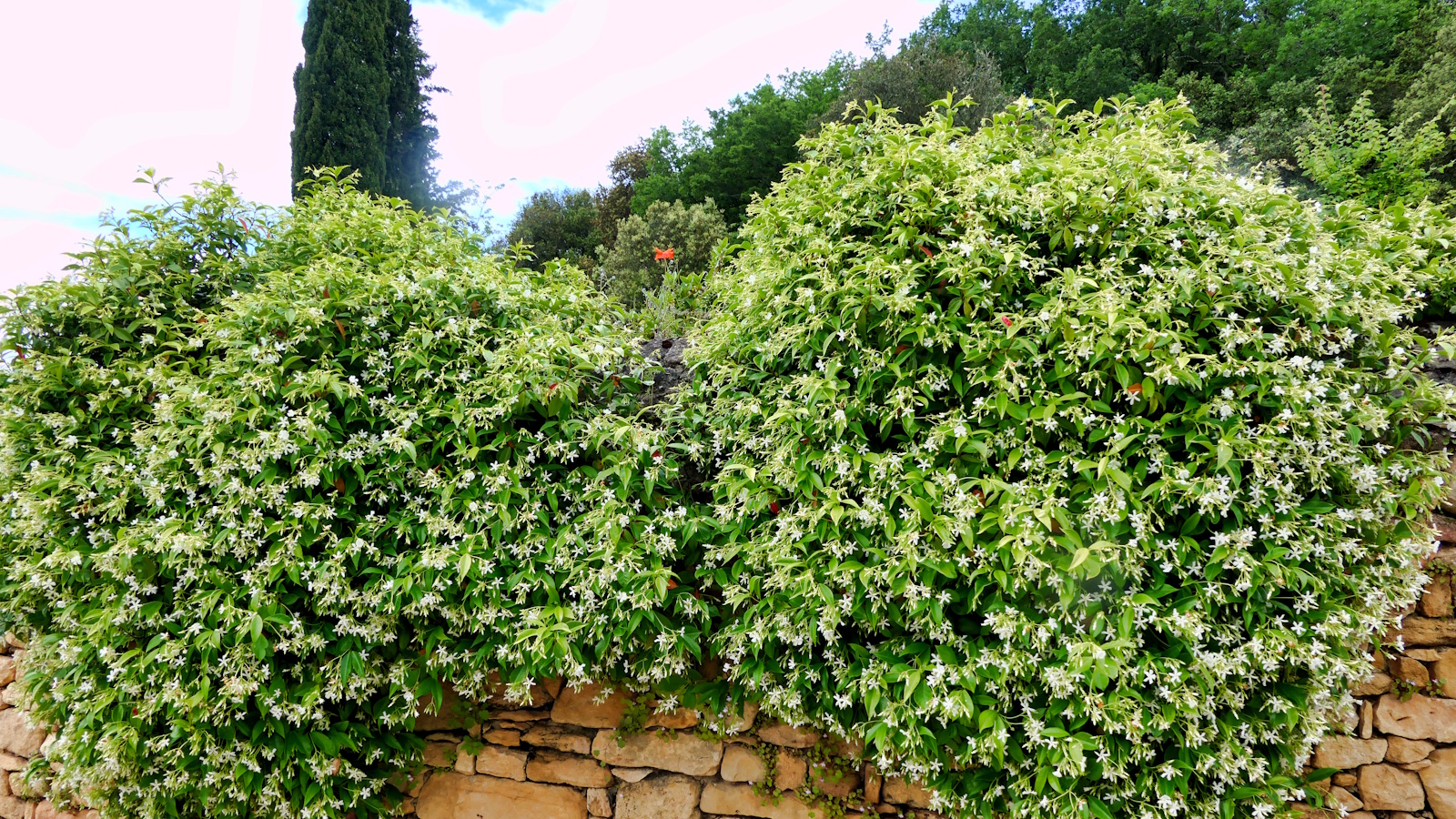

Knowing when and how to fertilize star jasmine is an important consideration if you are growing one or more in your yard. While these resilient climbers can often go many years without feeding, even thriving in poor soils, applying a small amount of fertilizer at the right time will undoubtedly give your plants a boost.
Star jasmine, or Trachelospermum jasminoides, is an all-star climbing plant. With its glossy evergreen leaves and sweetly scented, star-shaped blooms, it’s easy to see why this vine has long been a hit with gardeners worldwide. And, learning how to fertilize star jasmine will only serve to improve the health and vitality of your plants.
So, if you know how to grow star jasmine but want some extra advice on fertilizing, you've come to the right place. Whether you have a young vine or a bushy, mature specimen, this guide will ensure that your star jasmine keeps producing fragrant flowers for many years to come.
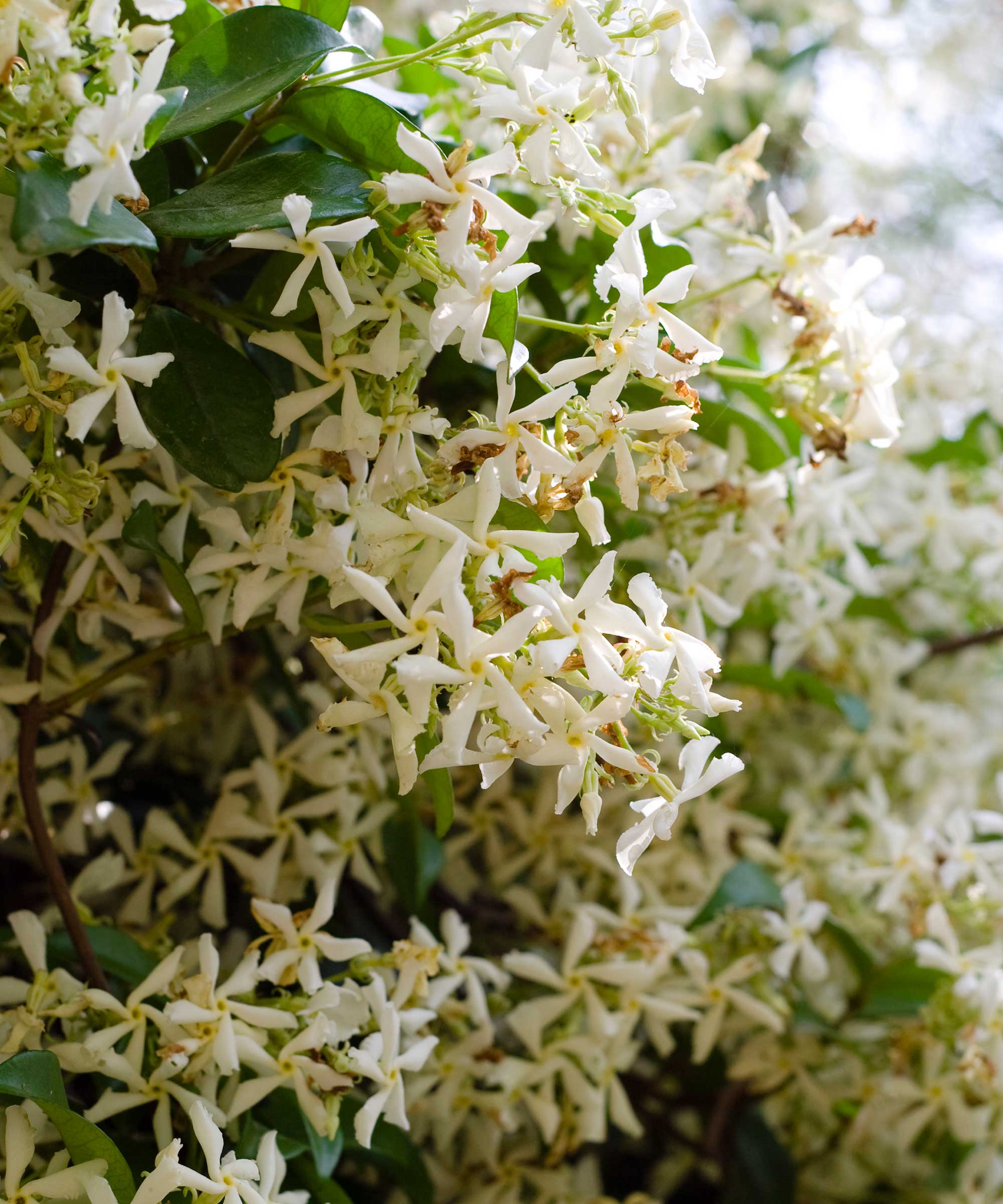
Growing star jasmine
'Star jasmine is native to Asia, including Japan, Korea, southern China and Vietnam,' says Jen McDonald, garden expert and a co-founder of Garden Girls. 'It grows best from US hardiness zone 8 to zone 10, with a preference for full sun or partial shade.
'In their native habitat of mountain woodlands and scrub land, star jasmine vines grow in well-drained and fertile soil,' Jen adds, 'so the occasional feed can help to give plants a helping hand, particularly when growing in pots or in yards with very rocky or poor soil.'
When to fertilize star jasmine
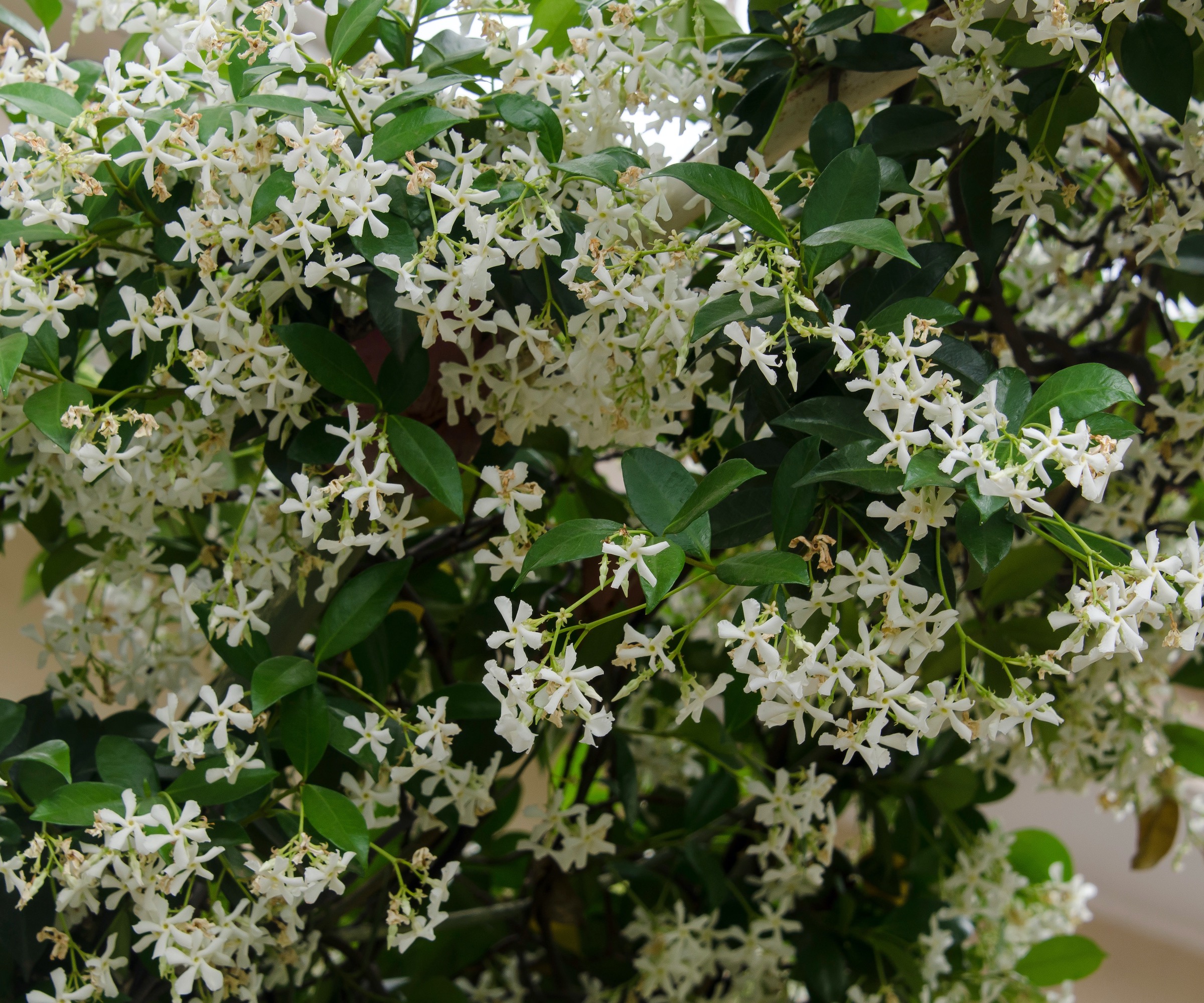
In terms of when to fertilize star jasmine, timing is everything. You should only begin feeding from early spring, just as your plant wakes up and produces new growth.
For star jasmine plants in containers (they are considered some of the best climbers to grow in pots), you will want to feed once every month from April until September.
For species growing in the ground, I would suggest a single application of fertilizer in spring. Generally speaking, these are climbing plants that thrive on neglect, so feeding any more than once in the spring would be an unnecessary fertilizing mistake that could actually do more harm than good.
In addition, avoid feeding beyond September, as this can encourage fleshy, frost-tender shoots that won’t have time to harden before the temperature drops in fall.
Regardless of the variety of star jasmine you grow, this spring and summer feeding schedule remains the same. Fertilizing with the right products during the growing season will support the formation of healthy growth and blooms.

Jen McDonald is a garden expert and co-founder of Garden Girls, LLC, based in Houston, TX. With 14 raised garden beds and 400 square feet of garden space, Jen grows cut flowers to peanuts, amaranth to okra, and everything in between.
How to fertilize star jasmine
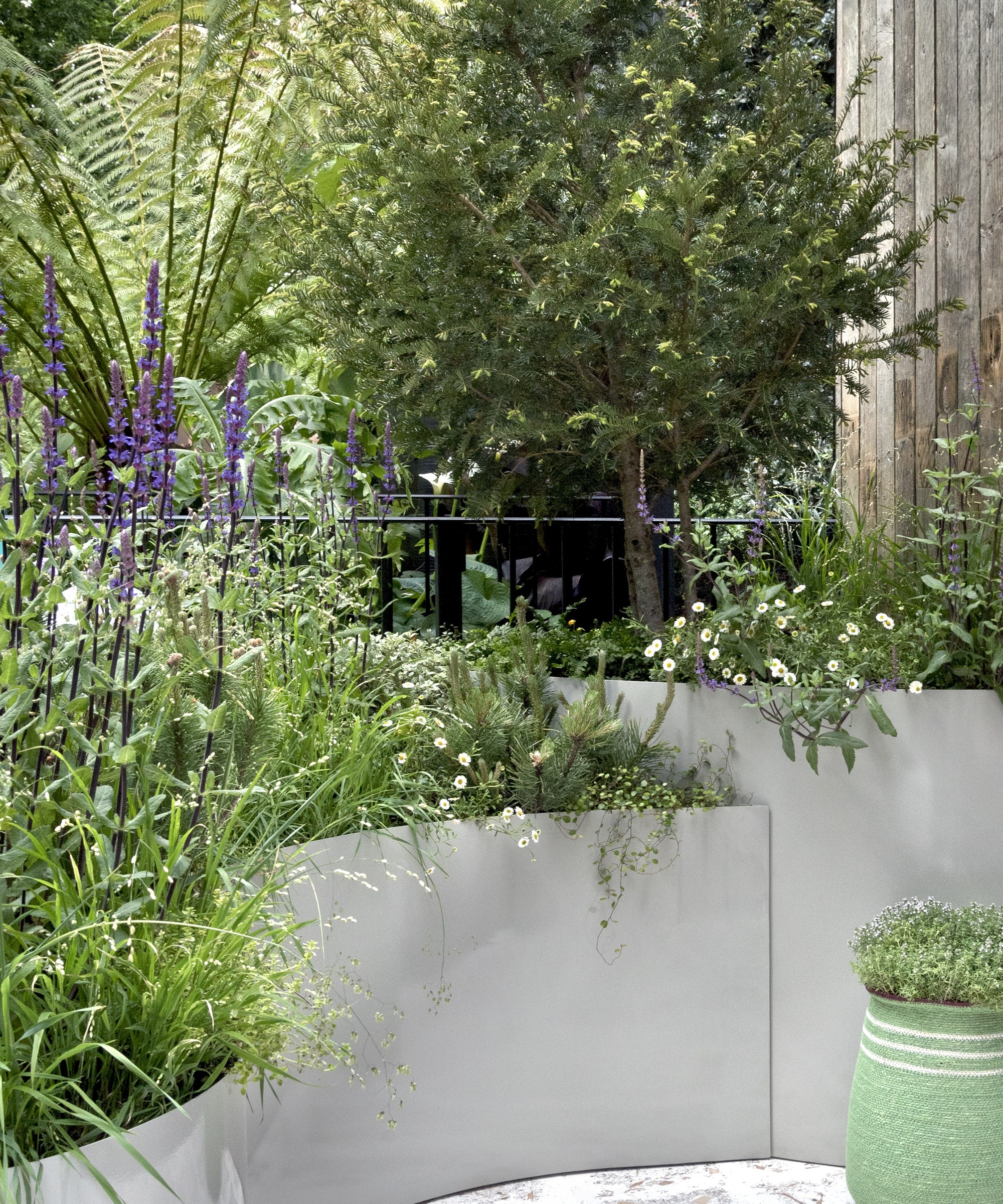
Feeding star jasmine isn’t complicated, but choosing the right product with suitable plant fertilizer numbers is key.
For recently planted younger vines, you can sprinkle a small amount of bone meal atop the soil, gently combining it with the soil before deep watering. Bone meal is high in nitrogen and phosphorus and will support the development of strong root systems.
Try something like this organic bone meal by Espoma, available at Walmart, which will give a boost to your younger vines.
'When planted in the spring, your vine will spend the first eight to 12 months developing a strong root system,' Jen says. 'Bone meal can help. After that, you should see vigorous growth, sometimes over six feet in a single year.'
For star jasmine plants grown in pots that already have a good show of evergreen foliage, you can use a bloom booster feed that is high in potassium and phosphorus, which are essential nutrients for flower development.
Try this organic bloom booster fertilizer by Dr Earth is available to order at Amazon, to encourage pot-grown plants to produce as many springtime flowers as possible.
Finally, for larger, established plants growing in borders, use a slow-release, balanced fertilizer with equal numbers, like a 10-10-10 formula. This will give your plant the nutrients it needs through the growing season and should only require one application in April or May.
Try this slow-release fertilizer from Perfect Plants Nursery, which will help to give your vines the boost they need to provide long-term growth.
FAQs
Can I feed climbing plants with tomato fertilizer?
Yes, to boost flowering, feed your climbers growing in containers with a high-potassium liquid feed, such as tomato fertilizer. This organic tomato feed from Burpee, available at Amazon, will get the job done. Use tomato feed once a month during blooming, afterwards reverting to an all-around fertilizer during summer. Why not learn how to make your own tomato fertilizer using household waste such as banana peels? Our guide has all the information.
If you are worried that your star jasmine is not producing many flowers, do not automatically assume it is a nutritional issue. Unless your climber is positioned somewhere with at least six or more hours of sunshine per day, it can struggle in terms of flower production.
Pots are easier to move to sunny situations, but always consider lighting requirements when planting in borders, as it will be difficult to move established specimens.
For more climbing plant care information, see our guide on when and how to prune star jasmine, to keep your favorite vines looking healthy and compact.
Shop climbing plant accessories
Sign up to the Homes & Gardens newsletter
Design expertise in your inbox – from inspiring decorating ideas and beautiful celebrity homes to practical gardening advice and shopping round-ups.

Thomas is a Content Editor within the Gardens Team at Homes and Gardens. He has worked as a professional gardener for both public spaces and private estates, specializing in productive gardening, growing food and flowers. Trained in Horticulture at the Garden Museum, he has written on gardening and garden history for various publications, including The English Garden, Gardens Illustrated, Hortus, The London Gardener and Bloom. He has co-authored a Lonely Planet travel book, The Tree Atlas, due out in 2024.
You must confirm your public display name before commenting
Please logout and then login again, you will then be prompted to enter your display name.
-
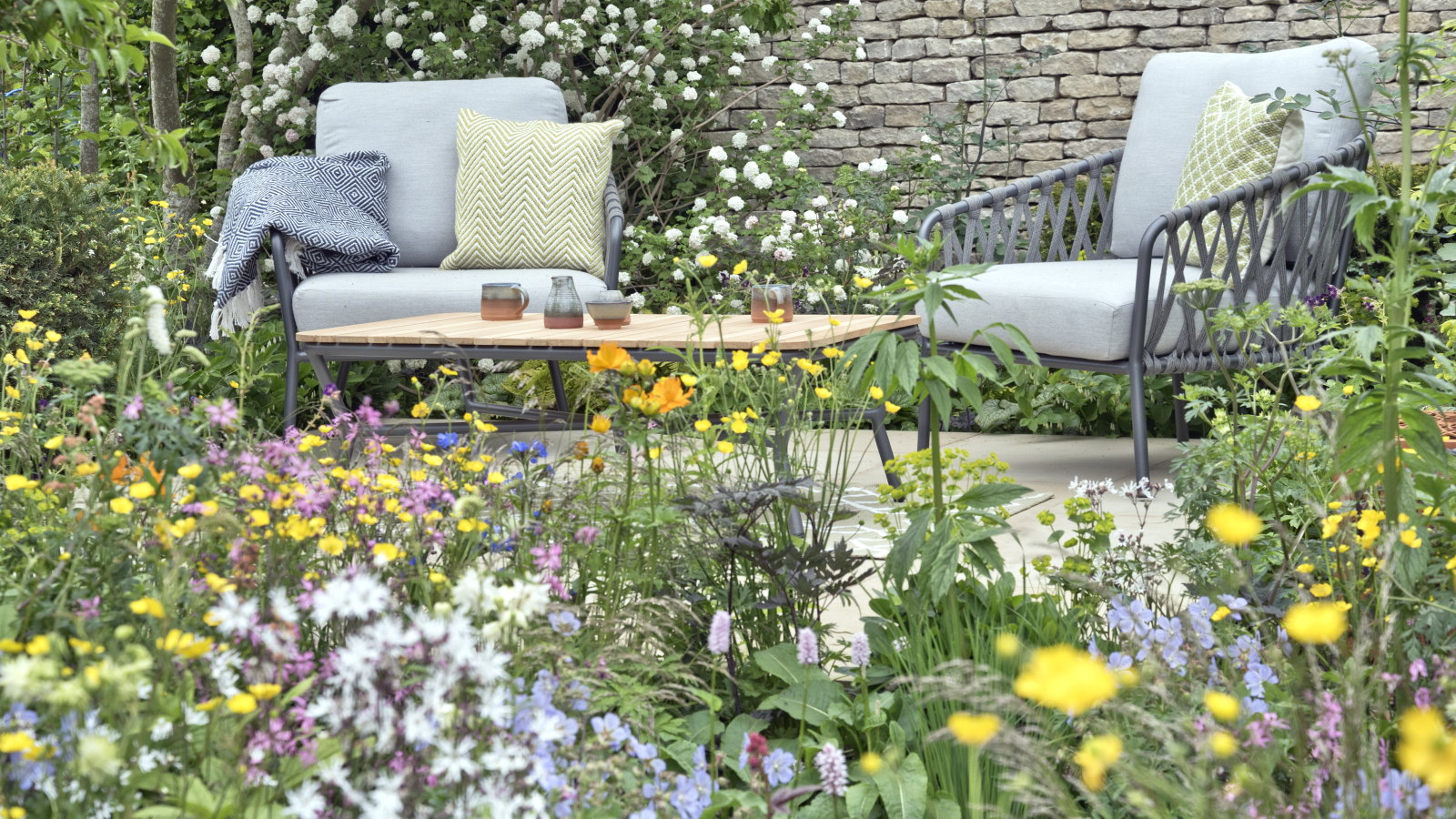 7 of the best annual flowers to plant in May for bountiful, dazzling blooms to fill borders and pots
7 of the best annual flowers to plant in May for bountiful, dazzling blooms to fill borders and potsPlus expert sowing tips from an experienced horticulturist
-
 This once dark and dated home was stuck in the '90s – now it's an unrecognizable example of stunning modern farmhouse style
This once dark and dated home was stuck in the '90s – now it's an unrecognizable example of stunning modern farmhouse styleTransformed from cluttered, outdated, and awkward to a contemporary, relaxing space – this California home now has the wow factor
-
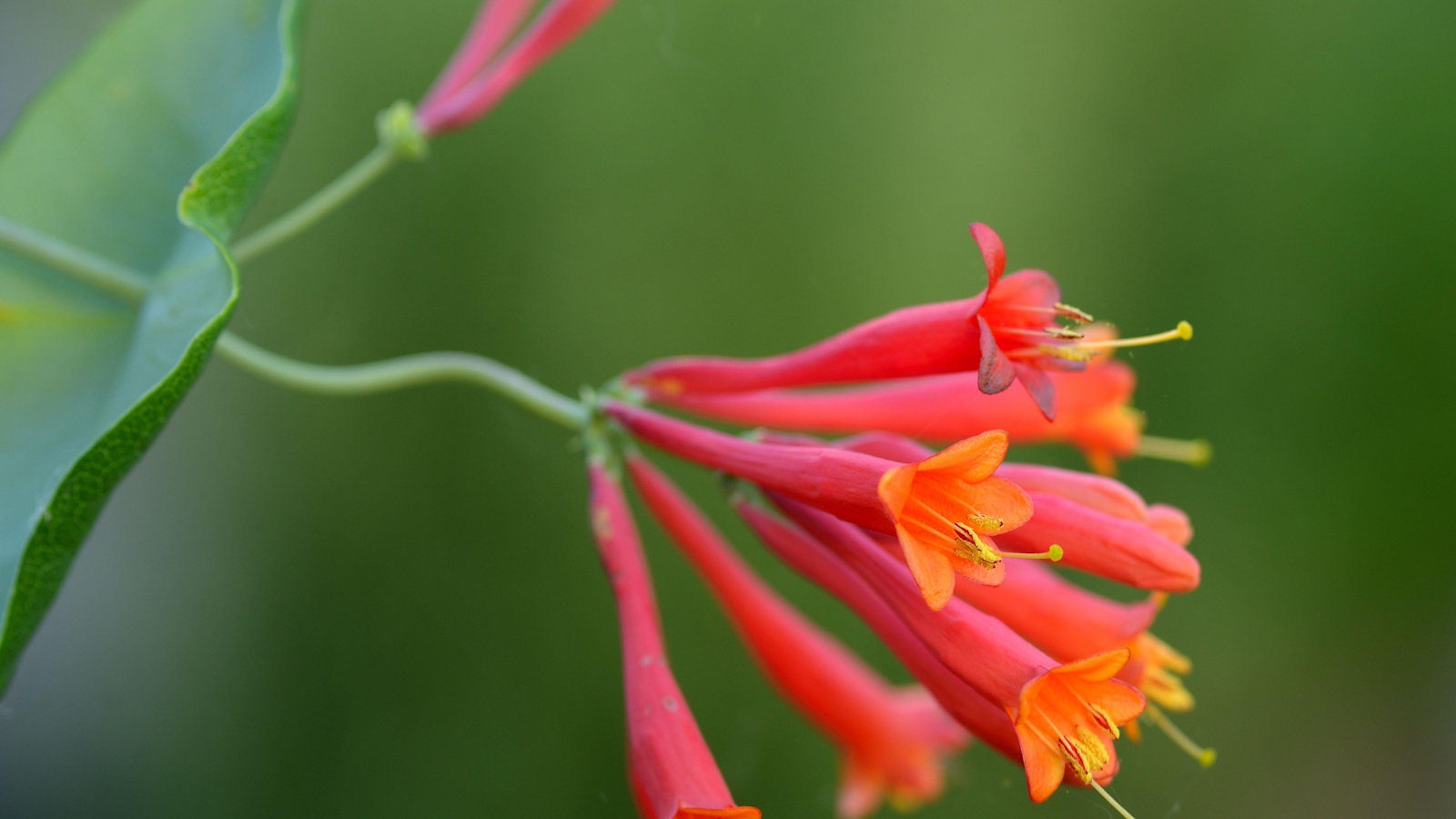 Native alternatives to invasive wisteria – 5 North American climbing plants with spectacular foliage and flowers to grow instead
Native alternatives to invasive wisteria – 5 North American climbing plants with spectacular foliage and flowers to grow insteadThese native vines will fill garden walls, fences and pergolas with greenery
-
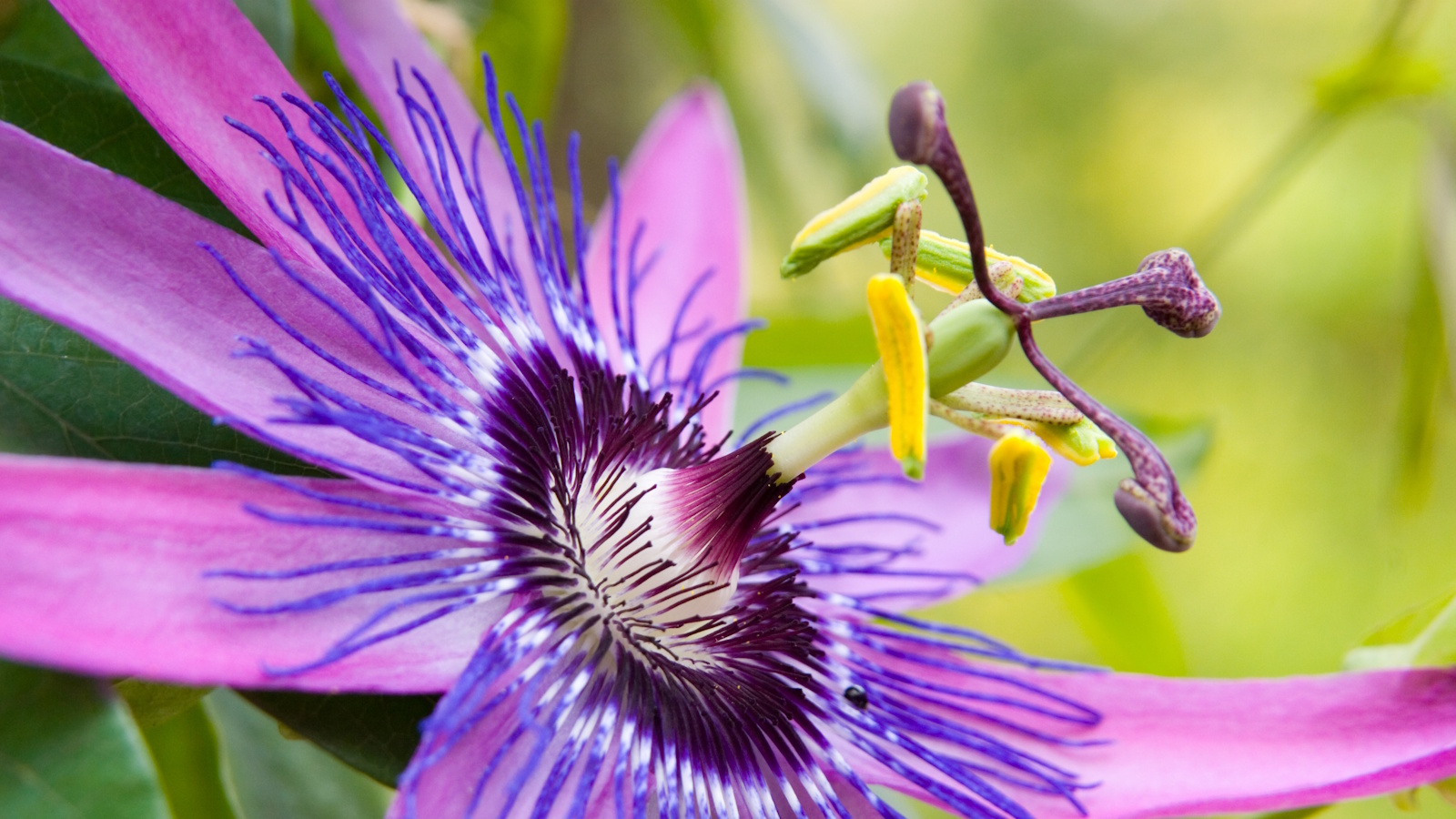 How to grow passion flowers in pots – the ultimate flowering vine that will transform any garden, whatever the size
How to grow passion flowers in pots – the ultimate flowering vine that will transform any garden, whatever the sizeLearning how to grow passion flowers in pots is a great option for gardeners with compact yards
-
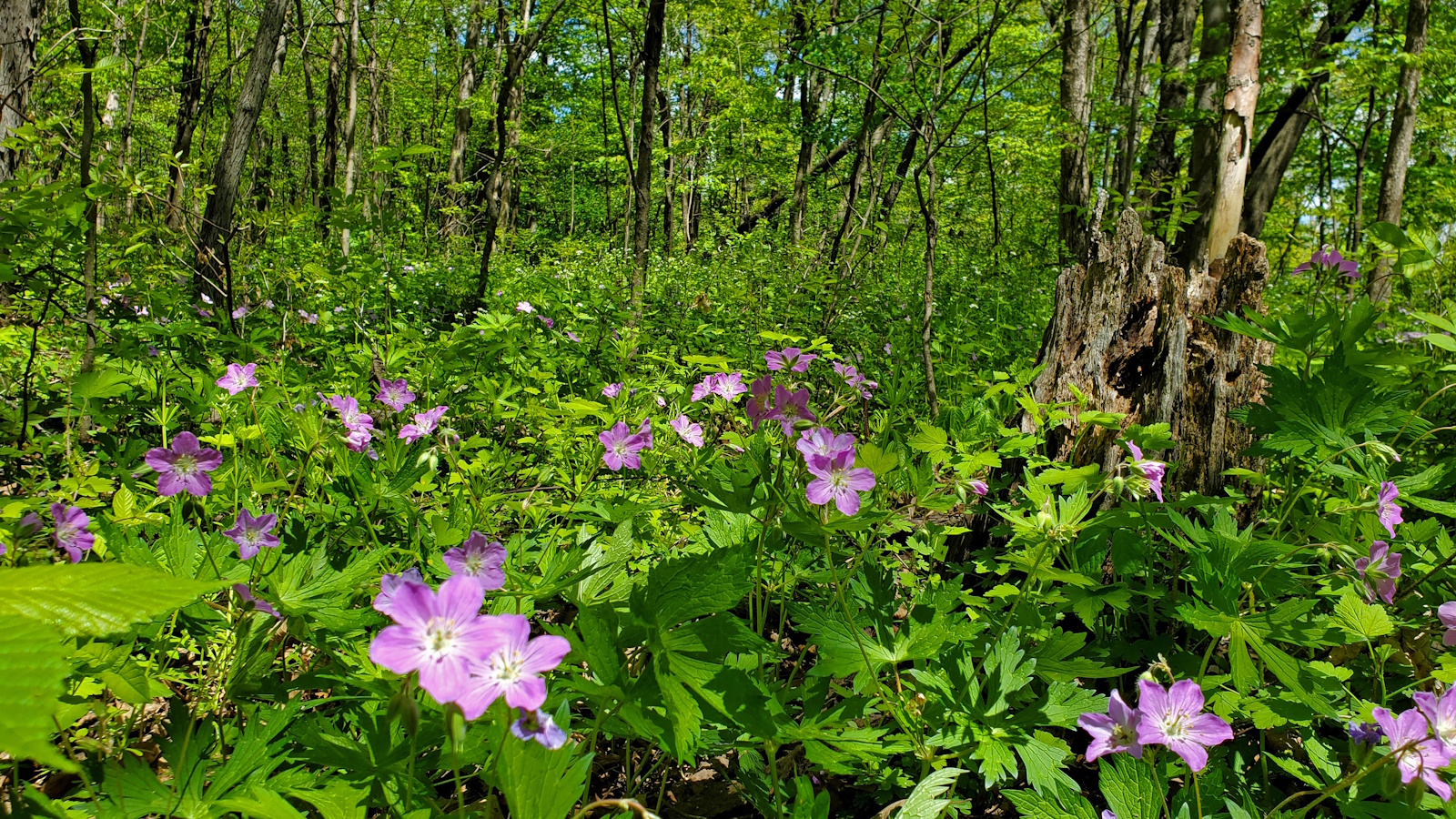 How to grow wild geranium – for a hardy flowering perennial that will thrive in shady gardens
How to grow wild geranium – for a hardy flowering perennial that will thrive in shady gardensThis tough perennial is a good option for adding color to darker borders
-
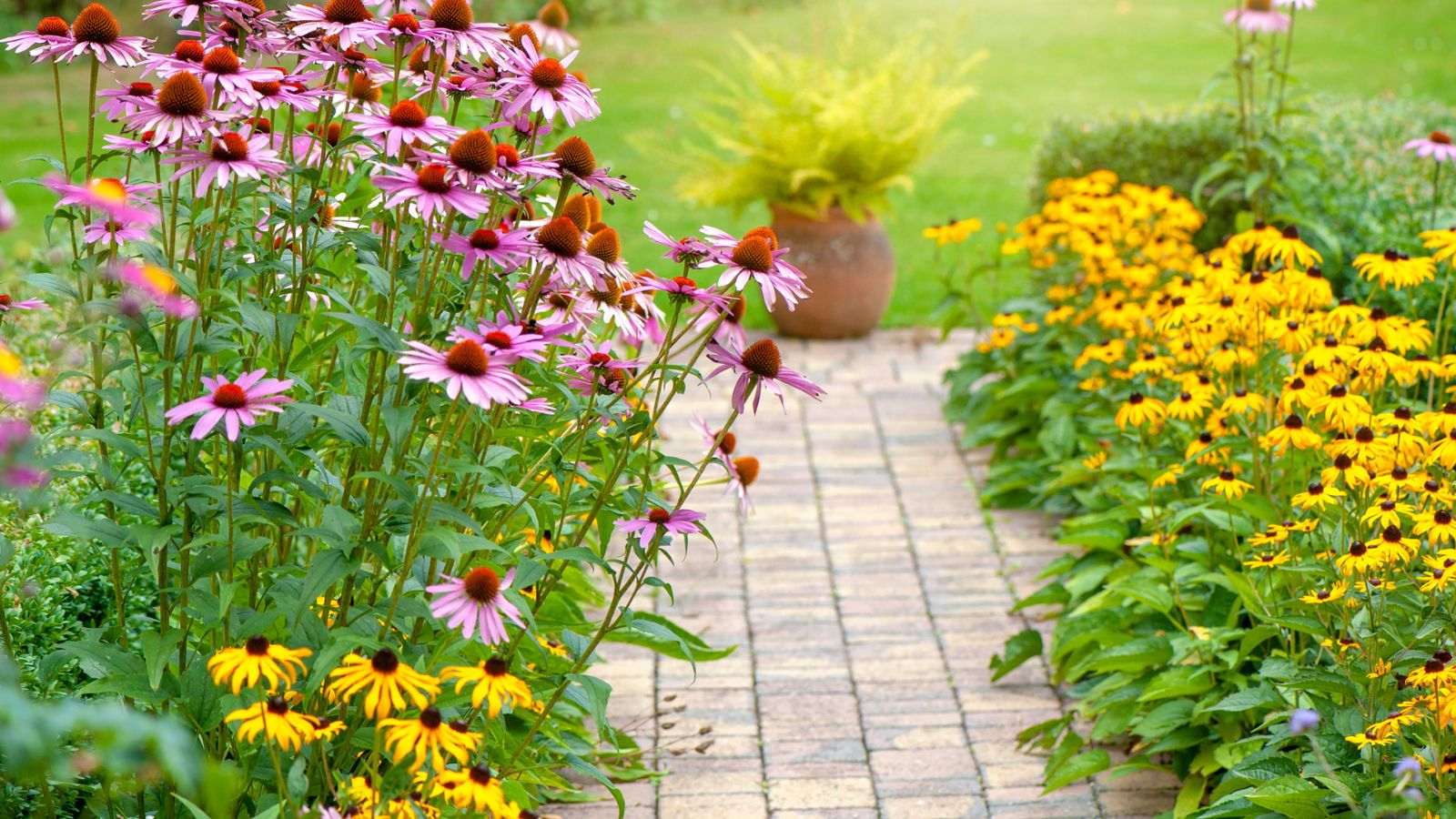 Best native perennials to stop weeds – 5 resilient North American species to keep problem plants under control in your yard
Best native perennials to stop weeds – 5 resilient North American species to keep problem plants under control in your yardPlant experts reveal the best native perennials to stop weeds from taking over your borders
-
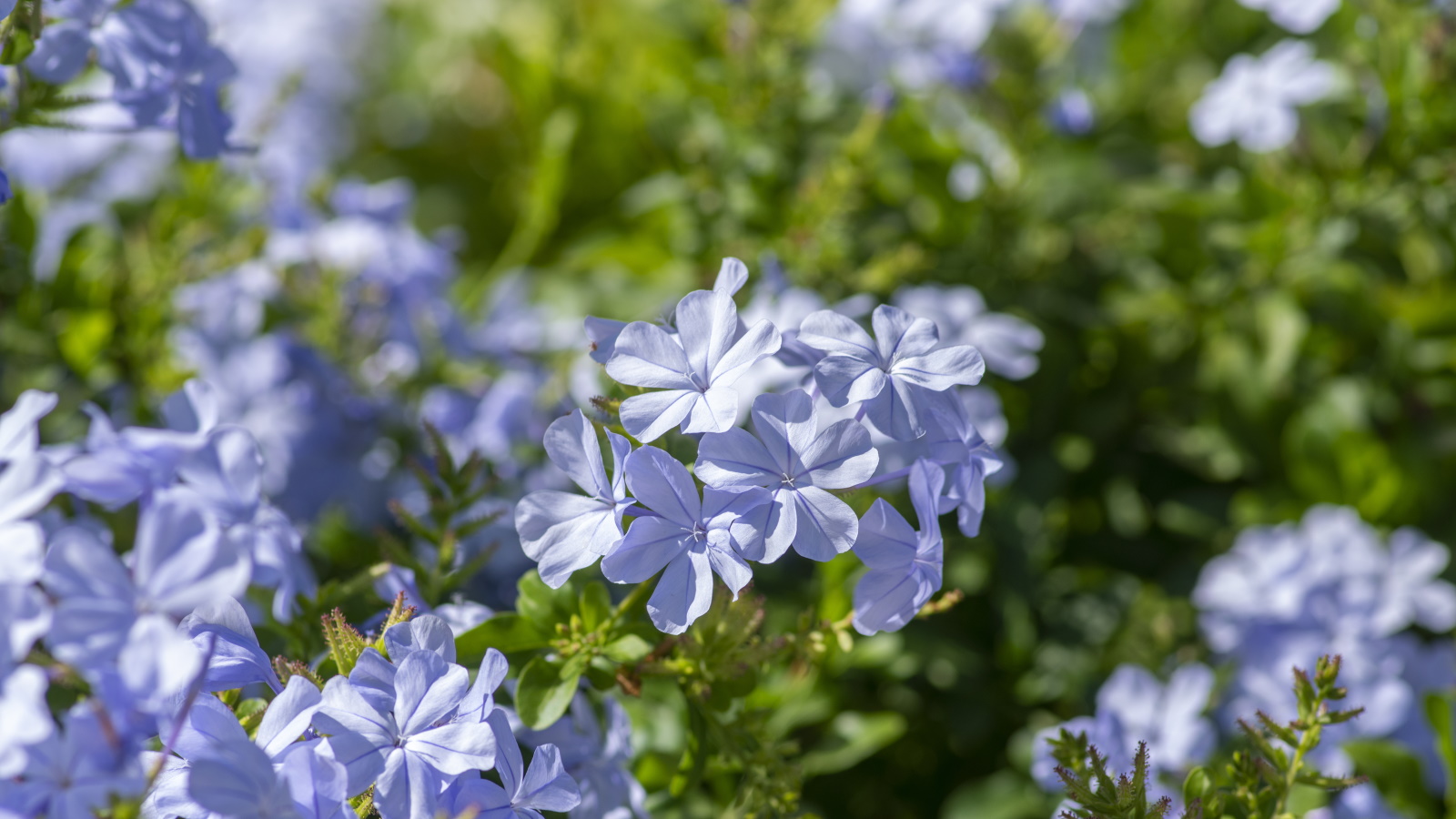 Climbing plants that thrive on neglect – 5 low-effort, vibrant vines for time-short gardeners
Climbing plants that thrive on neglect – 5 low-effort, vibrant vines for time-short gardenersThese low-maintenance climbing plants can grow just fine with minimal attention
-
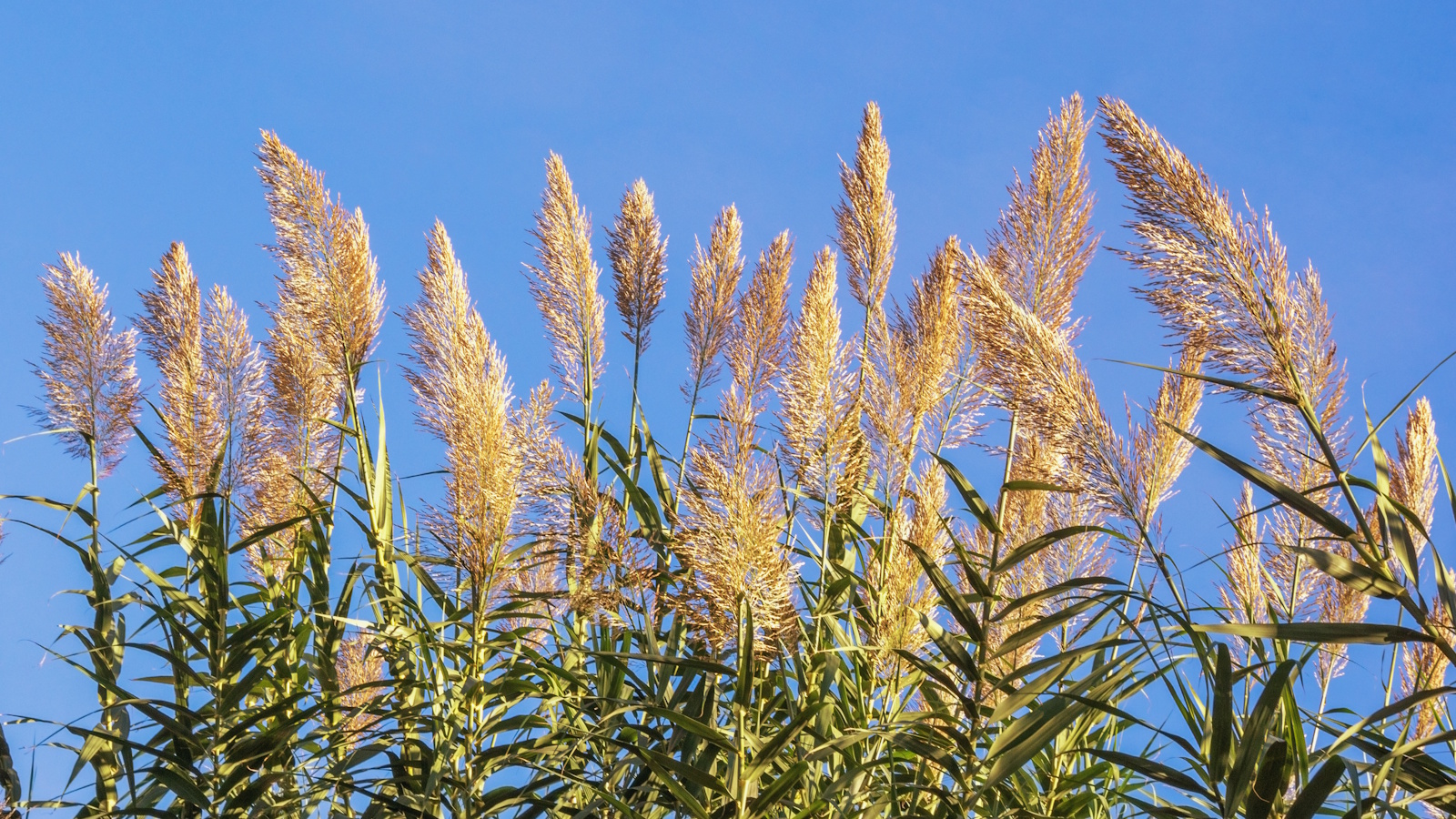 5 plants that are illegal to grow in California – how to control these invasive species in your yard, plus the native alternatives to use instead
5 plants that are illegal to grow in California – how to control these invasive species in your yard, plus the native alternatives to use insteadThese troublesome, invasive species will outcompete native plants and you could face a fine for growing them
-
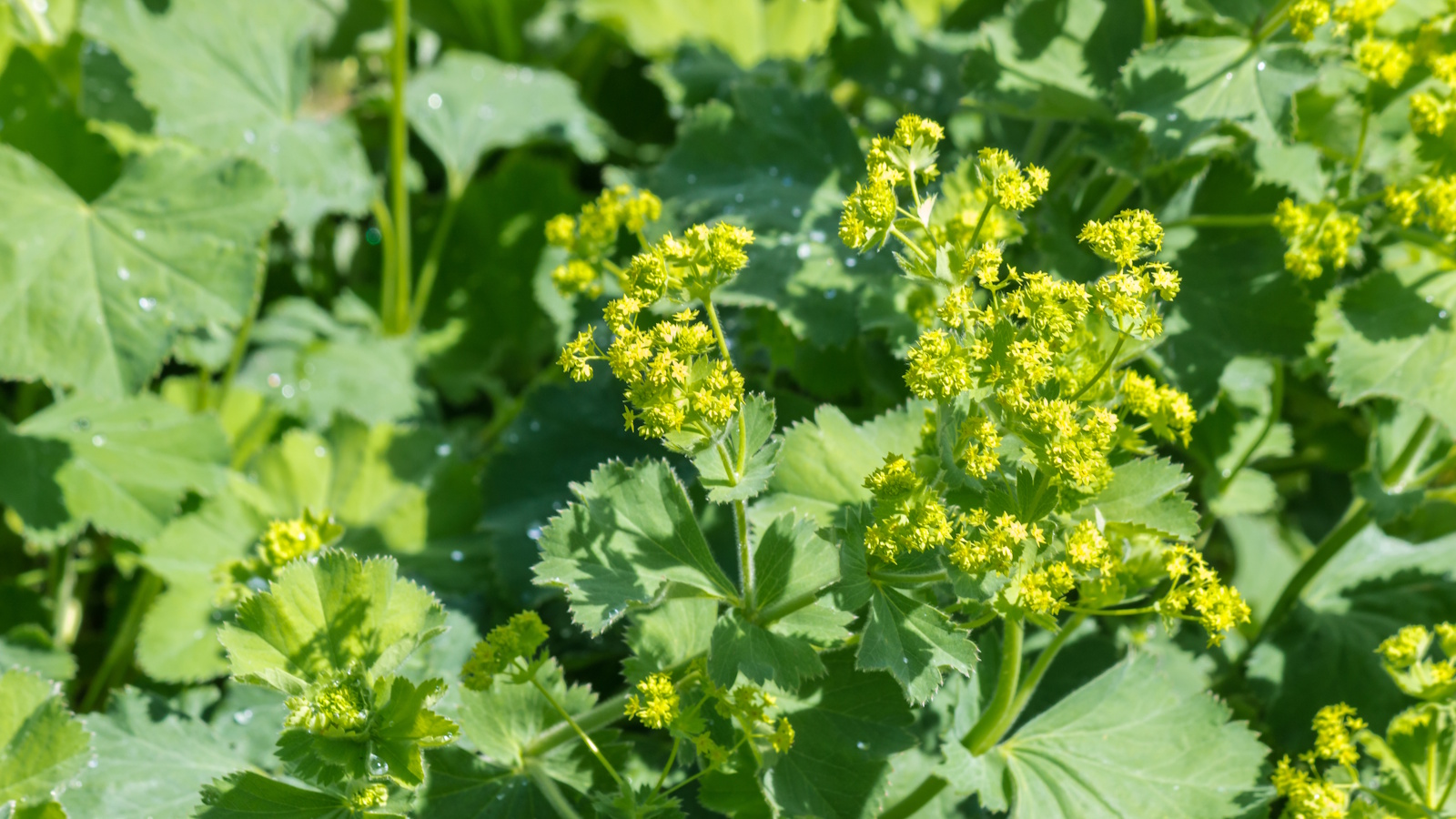 How to grow lady's mantle – for a shade-tolerant ground cover plant that will thrive in challenging borders
How to grow lady's mantle – for a shade-tolerant ground cover plant that will thrive in challenging bordersWith lush green foliage and luminous lime flowers, lady's mantle can add color and impact
-
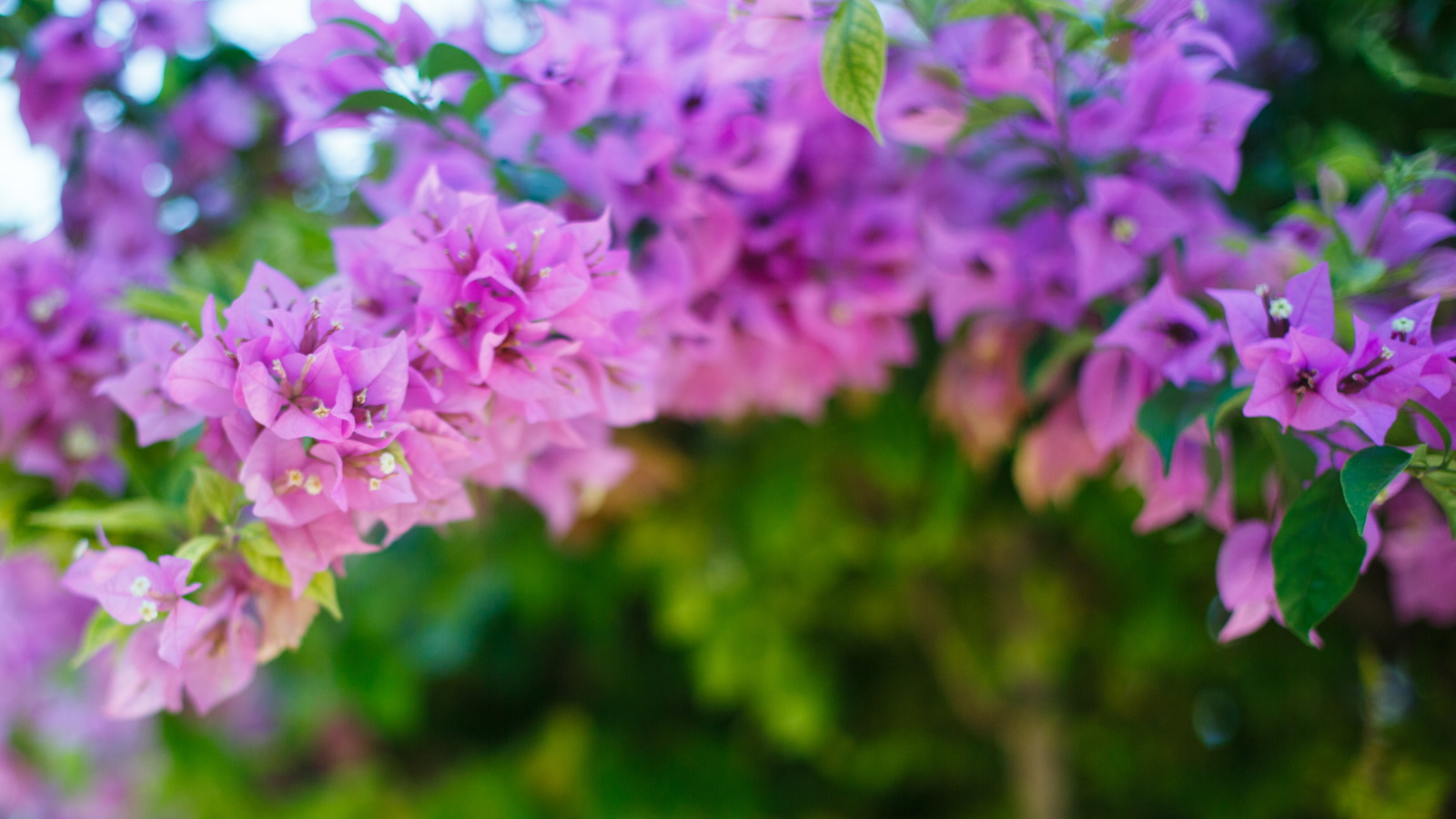 Best climbers to grow in pots – 5 easy-to-grow vines that will transform small spaces with vibrant color
Best climbers to grow in pots – 5 easy-to-grow vines that will transform small spaces with vibrant colorMake the most of small terraces, patios and balconies by filling pots with colorful climbers
